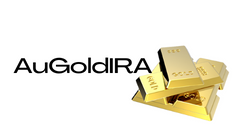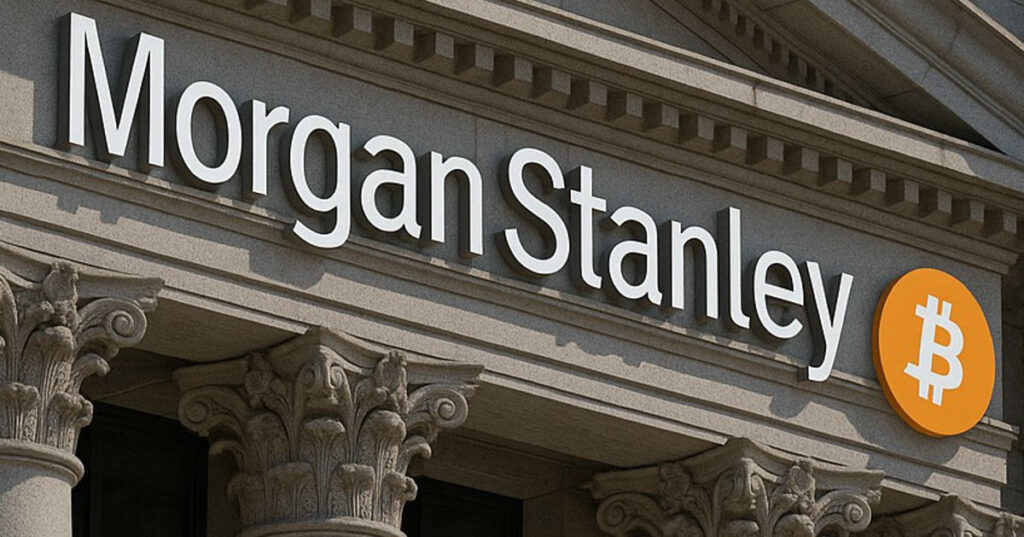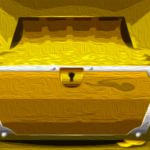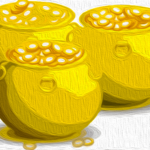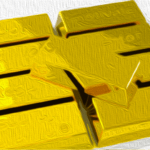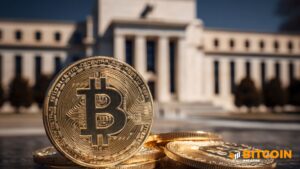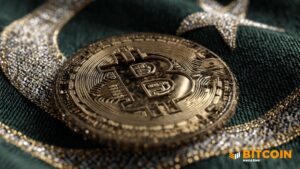
Exciting news for crypto enthusiasts! Morgan Stanley is gearing up to launch cryptocurrency trading services for retail investors on its E*Trade platform in the first half of 2026. This move signifies a major advancement by a Wall Street giant into the realm of Bitcoin and digital assets.
Revolutionizing Traditional Trading
Picture this: Morgan Stanley isn't just dipping its toes into the crypto waters. It envisions a future where traditional investments and digital currencies coexist harmoniously within the same account. This innovative approach aims to provide customers with a seamless experience across both worlds.
Partnership Power
Teaming up with Zerohash, a leading cryptocurrency infrastructure provider, Morgan Stanley is set to offer a comprehensive solution that includes liquidity, custody, and settlement services. This strategic collaboration underscores the bank's commitment to ensuring a robust and secure trading environment for its clientele.
The Ripple Effect
According to Jed Finn, Morgan Stanley's head of wealth management, this foray into crypto trading is just the beginning of a transformative journey. By offering clients access to digital assets, the bank aims to revolutionize the traditional financial landscape. Finn's vision extends beyond trading to encompass the development of a complete wallet solution for asset custody and tokenization.
Embracing Innovation
As regulatory barriers evolve, financial institutions like Morgan Stanley are seizing the opportunity to explore new horizons. The recent regulatory shifts have paved the way for banks to venture into the cryptocurrency market, with competitors like Charles Schwab also exploring similar avenues.
Robinhood, a pioneer in crypto trading, reaped substantial benefits last year, highlighting the immense potential within this space. Morgan Stanley's strategic investment in Zerohash further solidifies its position in the crypto infrastructure sector, signaling a deep-rooted commitment to innovation.
Tokenization: A Modern Frontier
Tokenization, a cutting-edge process that leverages blockchain technology to digitize traditional assets, is at the core of Morgan Stanley's strategic vision. By tokenizing assets like stocks, bonds, and cash, the bank aims to streamline back-office operations and enhance overall efficiency.
Empowering Investors
Imagine your money actively working for you the moment it enters your wallet. Tokenized cash offers the potential to accrue interest instantaneously, revolutionizing the way we perceive and interact with our finances. This forward-looking approach reflects Morgan Stanley's commitment to empowering investors and driving financial innovation.
As part of its progressive strategy, Morgan Stanley is set to introduce a crypto-inclusive asset allocation plan, catering to a diverse range of client objectives. This strategic move not only diversifies investment portfolios but also signals the bank's proactive stance in embracing the digital future.
Seize the Opportunity
For supporters of Bitcoin and digital assets, Morgan Stanley's venture into crypto trading marks a significant milestone towards mainstream acceptance. The convergence of traditional finance and cutting-edge technology opens up a world of opportunities for investors and paves the way for a more inclusive and dynamic financial ecosystem.
Excited about the future of cryptocurrency trading? Stay tuned for more updates on Morgan Stanley's groundbreaking initiatives!
Frequently Asked Questions
What precious metals can you invest in for retirement?
The first step to retirement planning is understanding what you have saved now and where you are saving money. To find out how much money you have, take a inventory of everything that you own. This should include any savings accounts, stocks, bonds, mutual funds, certificates of deposit (CDs), life insurance policies, annuities, 401(k) plans, real estate investments, and other assets such as precious metals. You can then add up all these items to determine the amount of investment you have.
If you are less than 59 1/2 years of age, you may be interested in opening a Roth IRA. A traditional IRA allows you to deduct contributions from your taxable income, while a Roth IRA doesn't. However, you won't be able to take tax deductions for future earnings.
If you decide to invest more, you will most likely need to open a second investment account. Begin with a regular brokerage.
What precious metals may I allow in my IRA?
The most commonly used precious metal in IRA accounts is, of course, gold. Investments in gold bullion coins or bars can be made as well.
Precious metals are considered safe investments because they don't lose value over time. They are also an excellent way to diversify your investment portfolio.
Precious metals are silver, palladium, and platinum. These three metals are similar in their properties. Each one has its own uses.
For instance, platinum can be used in jewelry manufacturing. Palladium is used to create catalysts. It is used for producing coins.
Think about how much you can afford to purchase your gold, before you make a decision on the precious metal. You may be better buying gold that is less expensive per ounce.
You need to decide if you want your investment to remain private. If you have the desire to keep your investment private, palladium might be the best choice.
Palladium is more expensive than gold. But it's also less common. This means you might have to spend more.
Their storage fees are another important factor to consider when choosing between sterling and gold. The weight of gold is what you store. The price for larger amounts will go up.
Silver is stored according to its volume. Silver is priced by volume. You will pay less to store smaller amounts.
If you decide to store your precious metals in an IRA, follow all IRS rules regarding gold and silver. This includes keeping records of transactions and reporting them back to the IRS.
Should you open a Precious Metal IRA
Answers will depend on whether you have an investment goal or how high you are willing and able to tolerate risk.
If you plan to use the money for retirement, you should open an account now.
Precious metals will appreciate over time. They also offer diversification benefits.
In addition, gold and silver prices tend to move together. This makes them an excellent choice for investors in both assets.
You should not invest in precious-metal IRAs if it is not your intention to use your money for retirement, or if you are unwilling to take any risks.
How much money can a gold IRA earn?
Yes, but it's not as simple as you think. It all depends on how risky you are willing to take. If you can afford to invest $10,000 every year for 20-years, you could possibly have $1,000,000 by retirement age. However, if all your eggs are in one basket, then you will lose everything.
Diversify your investments. Inflation can make gold perform well. You want to invest in an asset class that rises along with inflation. Stocks do this well because they rise when companies increase profits. Bonds are also able to do this. They pay annual interest. So they're great during times of economic growth.
What happens if there is no inflation? Stocks fall more and bonds lose value during deflationary times. This is why investors should avoid putting all their savings into one investment, such as a bond or stock mutual fund.
They should instead invest in a combination of different types of funds. For example, they could invest in both stocks and bonds. They could also invest both in bonds and cash.
They are exposed to both sides of a coin. Inflation and deflation. They will see a return over time.
What are the three types?
There are three types: Roth, Traditional, and SEP. Each type has its advantages and limitations. Each type will be covered in detail below.
Traditional Individual Retirement Accounts
Traditional IRAs allow you to make pretax contributions to an account that allows you to defer taxes while still earning interest. The account can be withdrawn tax-free once you are retired.
Roth IRA
Roth IRAs allow for you to make after-tax deposits into an account. The earnings are tax-free. Withdrawals from the account are also tax-free when you withdraw funds for retirement purposes.
SEP IRA
This is similar to a Roth IRA, except that it requires employees to make additional contributions. These additional contributions are taxed, but any earnings grow tax-deferred once again. You may choose to convert the entire amount to a Roth IRA when you leave the company.
Statistics
- The maximum yearly contribution to an individual's IRAs is currently $6,000 ($7,000 for those 50 years or older), or 100% of earned income, whichever is less. (monex.com)
- To qualify as IRA allowable precious metals and be accepted by STRATA, the following minimum fineness requirements must be met: Gold must be 99.5% pure, silver must be 99.9% pure, and platinum and palladium must both be 99.95% pure. (stratatrust.com)
- Silver must be 99.9% pure • (forbes.com)
- Same tax rules as traditional IRA SEP IRA contributions in 2022 are limited to 25% of compensation or $66,000, whichever is less Before setting up a Silver IRA, understand the fees and IRS restrictions. (sltrib.com)
External Links
forbes.com
- Gold IRA, Add Some Sparkle to Your Retirement Nest egg
- Understanding China's Evergrande Crisis – Forbes Advisor
en.wikipedia.org
regalassets.com
kitco.com
How To
Precious Metals Approved by the IRA
Whether you're looking to save for retirement or invest for your next business venture, IRA-approved precious metals make great investments. Various options can help diversify your portfolio and protect against inflation from gold bars to silver coins.
There are two types of precious metal investment products. Physical bullion products such bars or coins are considered to be physical assets, as they exist in tangible form. On the other hand, exchange-traded funds (ETFs) are financial instruments that track the price movements of an underlying asset, such as gold. ETFs trade just like stocks, and investors can purchase shares from the company that is issuing them.
There are various types of precious metals available for purchase. Silver and gold are frequently used for ornaments and jewelry making, while palladium and platinum are more often associated with luxury items. Palladium is more stable than platinum and therefore better suited for industrial purposes. While silver can be used for industrial purposes, it is more commonly preferred for decorative purposes.
Due to the expense of mining and refining natural materials, physical bullion is more expensive. However, they are generally safer than paper currencies and provide buyers with greater security. Consumers may lose faith in the currency and seek out alternatives if the U.S. dollar falls in purchasing power. Physical bullion products on the other side do not depend upon trust between countries and companies. Instead, they are backed up by central banks and governments giving customers peace-of-mind.
The supply and demand for gold affect the price of gold. Demand rises, and the price goes up. On the other hand, supply falls when demand exceeds demand. Investors have the opportunity to profit by fluctuations in gold's price. This fluctuation is good news for investors who own physical bullion items as they earn a higher return.
Precious metals are not affected by interest rate changes or economic recessions, unlike traditional investments. The price of gold is likely to continue rising as long the demand for it remains strong. Precious metals are safe havens in times of uncertainty because of this.
These precious metals are the most in demand:
- Gold – This is the oldest kind of precious metal. It is often called “yellow gold”. Although gold is a common household name, it is a very rare element found naturally underground. Most of the gold reserves in the world are located in South Africa.
- Silver – After gold, silver ranks second in precious metals. Silver is mined from the earth's natural resources. Silver is extracted from ore, not rock formations, unlike gold. Because of its durability and malleability, as well as resistance to tarnishing, silver is widely used in commerce and industry. Over 98% of global silver production is produced in the United States.
- Platinum – Platinum ranks third in the most valuable precious metals. It can be used to make high-end medical equipment, fuel cells, and catalytic converters. It is used in dentistry for dental crowns, fillings and bridges.
- Palladium – Palladium is the fourth most valuable precious metal. Because of its strength as well as stability, its popularity is increasing rapidly among manufacturers. Palladium is also used in electronics, automobiles, aerospace, and military technology.
- Rhodium: Rhodium ranks fifth in the most valuable precious metals. Rhodium is very rare but is highly sought for its use in automotive catalysts.
- Ruthenium – Ruthenium ranks sixth in the list of most valuable precious metals. There are limited quantities of platinum and palladium. However, ruthenium is abundant. It is used in steelmaking, chemical manufacturing, and engine design.
- Iridium – Iridium is the seventh most valuable precious metal. Iridium has a significant role in satellite technology. It is used for the construction of satellites with orbital capabilities that transmit television signals and other communications.
- Osmium (Osmium) – Osmium has the eighth highest value precious metal. Because of its extreme temperature resistance, Osmium is often used in nuclear reactors. It is also used in cutting tools, jewelry, and medicine.
- Rhenium- Rhenium, the ninth most precious precious metal, is Rhenium. Rhenium is used for refining oil, gas, semiconductors, rocketry, and other purposes.
- Iodine – Iodine is the tenth-most valuable precious metal. Iodine is used in photography, radiography, and pharmaceuticals.
—————————————————————————————————————————————————————————————-
Based on [POSTTITLE]
by [POSTAUTHOR]
